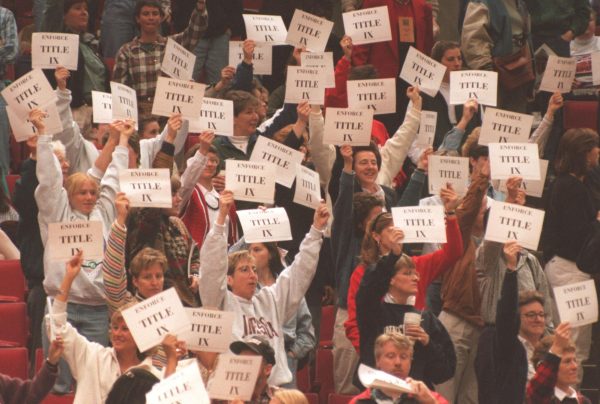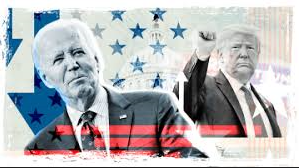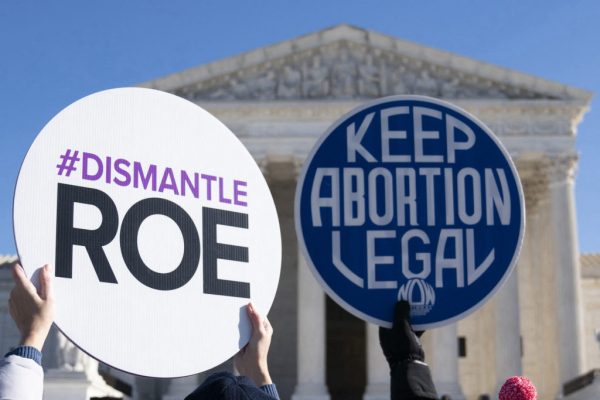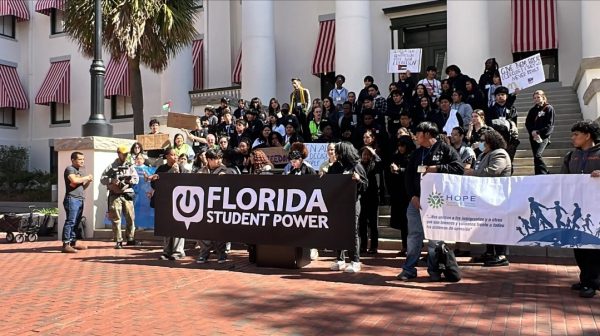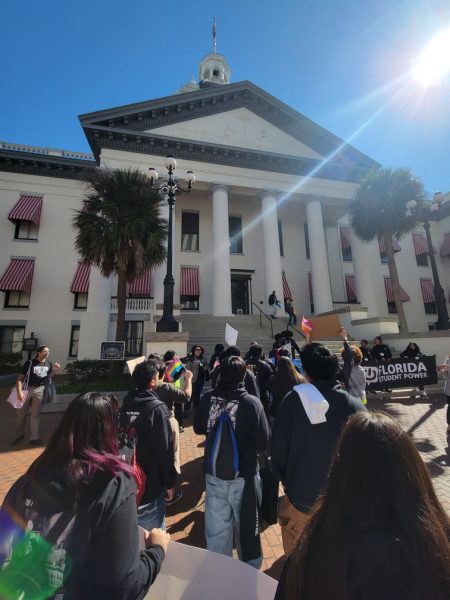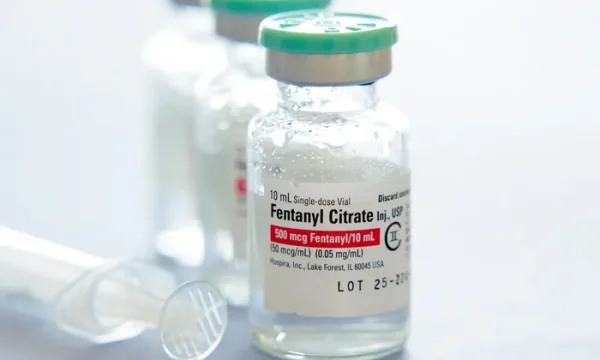Takeaways from the Derek Chauvin Trial in George Floyd’s Death
Derek Chauvin worked for the Minneapolis Police Department for more than 18 years. Within the span of a week is charged with second-degree unintentional murder, third-degree murder and second-degree manslaughter in the killing of George Floyd in south Minneapolis on May 25, 2020. With the eyes of the world watching, Chauvin’s trial began March 8. The final nine days and the witness testimonies reveal how it unfolded.
Trial quotes from this article were obtained from ABC News.
March 29th:
The morning began with opening remarks by special prosecutor Jerry Blackwell, who walked the jury through the events leading up to the death of Floyd. “You will learn that on May 25, 2020, Mr. Derek Chauvin betrayed this badge when he used excessive and unreasonable force upon the body of Mr. George Floyd, that he put his knee upon his neck and his back, grinding and crushing him until the very breath, no, ladies and gentlemen, until the very life was squeezed out of him,” Blackwell said.
Chauvin’s defense attorney Eric Nelson’s 20-minute opening statement followed, he walked the jury through the events of May 25, and explained reasonable doubt, and what can be considered a reasonable use of force by a police officer. “That’s what this case is ultimately about: It’s about the evidence … It is nothing more than that,” Nelson said. There is no political or social cause in this courtroom.”
As required, the prosecution presented its case first. The state called three witnesses today. They were: Jena Scurry, the 911 dispatcher who handled the call that resulted in Chauvin and the other officers responding to the intersection where Floyd was detained, Alisha Oyler, a Speedway employee at 38th and Chicago who witnessed Floyd’s arrest, and Donald Williams II, a witness at the scene of 38th and Chicago who urged Derek Chauvin to get off Floyd’s neck and to check Floyd’s pulse.
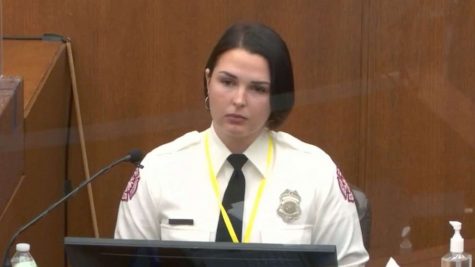
March 30th: Tuesday March 30th
Tuesday began with witness Donald Williams II picking up where he left off after telling how he repeatedly pleaded with Chauvin to set Floyd free. Defense attorney Nelson pressed Williams about him growing more angry and threatening the officers at the time. He explained he became irate because the officers “were not listening to anything I was telling him. I felt like I had to speak out for Floyd.” He also explained why he called 911 that night: “I called the police on the police…because I believe I witnessed a murder.”
The prosecution then called five new witnesses on Tuesday. One was Darnella Frazier, the teenager, now 18, who filmed the viral video of Chauvin with his knee on Floyd’s neck outside Cup Foods.
“When I look at George Floyd, I look at my dad, I look at my brothers, I look at my cousins, my uncles because they’re all Black,” Darnella testified. “And I look at that and I look at how that could have been one of them.”
Along with Frazier, Genevieve Hansen, a Minneapolis firefighter who was off-duty at the time of witnessing the scene also testified. She claimed to have felt helpless and “desperate” when the police prevented her from giving medical aid to George Floyd as he lay handcuffed on the ground in physical distress with the weight of three police officers on top of him.

Defense attorney Eric Nelson and defendant former Minneapolis police Officer Derek Chauvin
April 1st and 2nd:
The prosecution called four new witnesses on Wednesday. They were: Christopher Martin, 19, the Cup Foods clerk who sold Floyd a pack of cigarettes and suspected the $20 bill Floyd used was counterfeit. After he attempted twice to get Floyd back in the store, his manager summoned the police. Martin was seen in exterior store video footage pacing about near the arrest scene and clasping his hands atop his head. Martin said he was feeling “disbelief and guilt.” Why? He was asked. “If I would have just not taken the bill, this could have been avoided.”
The clerk said that when he first saw the bill, “I noticed it had a blue pigment to it, kind of like a $100 bill would have, so I found that kind of odd and assumed it was fake.” Martin said store policy meant he would have to pay for any counterfeit currency he or his co-workers accepted. “I took it anyway and was willing to put it on my tab, and then I second guessed myself,” he said.

April 3rd:
The prosecution called five new witnesses to testify, one of those being Courteney Ross, George Floyd’s girlfriend of three years leading up to his death. She testified about their relationship after she met him while visiting the Salvation Army Harbor Lights shelter where he worked as a security guard. She explained that they both battled off and on with opioid addiction stemming from chronic pain and they later became addicted to their prescriptions. Soon after they began buying the drugs off the street. She said Floyd usually used oxycodone and obtained them through other people’s prescriptions to ensure that they were safe. Shortly before Floyd’s death, Ross said they had taken a pill that acted more as a stimulant.
“Both Floyd and I, our story is a classic story is of how we both get addicted to opioids,” she testified. “…We got addicted and tried really hard to break that addiction many times. “The defense has contended that illicit drug use played a role in Floyd dying and not anything Chauvin did to him on May 25.
April 4th:
Police Lt. Richard Zimmerman, who said it was “totally unnecessary” for Chauvin to put his knee on a handcuffed Floyd’s neck during his arrest. Zimmerman, a 36-year veteran of the department and head of the homicide unit, minced no words when testifying based on his viewing video from the officers ‘body-worn cameras. He said, “First of all pulling him down to the ground face down and putting your knee on a neck for that amount of time is just uncalled for. I saw no reason why the officers felt they were in danger.” Under cross examination, defense attorney Eric Nelson noted that as an investigator, Zimmerman rarely has to use force compared to a patrol officer. Zimmerman also acknowledged under questioning that situations can be fluid, and officers must quickly adapt to what he called “scene security.” “So you’re gonna assess, are there people watching, are there people videotaping, are those people happy or angry, etc., right?” asked Nelson. “Yes,” said Zimmerman.

April 5:
The day focused heavily on officer training and how Chauvin’s actions on May 25 did not comply with what he was taught, according to the prosecution. Defense attorney Eric Nelson countered with how policy wording gives officers latitude during arrests, and flexibility about how and when to provide medical attention to a suspect. The prosecution called three new witnesses to testify one of them being Arradondo. The highest-profile witness yet to testify for the prosecution, Arradondo went over page after page of his police force’s policies on use-of-force, de-escalation and best practices, some of which he personally wrote. Prosecutor Steve Schleicher asked Arradondo if he would describe the force Chauvin used on Floyd, as proper and according to the training of Minneapolis police officers.
“I absolutely do not agree with that,” Arradondo answered. “That action is not de-escalation and when we talk about the framework of our sanctity of life and when we talk about the principles and values that we have that action goes contrary to what we’re taught.”
April 6th and 7th:
Officer Nicole Mackenzie, a medical support coordinator for the Minneapolis police department, responsible for CPR and other classes for officers. She said police have a responsibility to both call ambulance and render aid “if it’s a critical situation.” She testified that being able to talk doesn’t mean you’re necessarily able to breathe. She testified that agonal breathing, or a brainstem reflex that causes gasping, could be misinterpreted as breathing. “Somebody could be in respiratory distress and still be able to verbalize it,” she said. “Just because they’re speaking doesn’t mean they’re breathing adequately.”
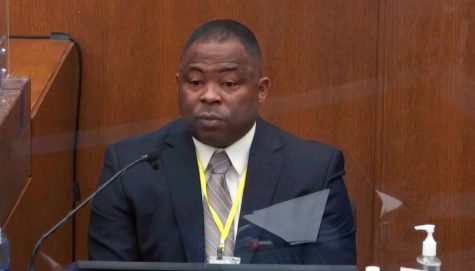
Sgt. Jody Stiger, a former Marine and a 28-year veteran of the Los Angeles Police Department, was called as the prosecution’s first expert witness in the high-profile case.
Stiger said he reviewed all of the videos showing the May 25, 2020, fatal encounter with Floyd — including footage from police body cameras, surveillance cameras and videos taken by bystanders —
“My opinion was that force was excessive,” Stiger testified. “When someone cannot comply, he said, “At that point, it’s just pain.” He also testified that placing a person prone on the ground runs the risk of positional asphyxiation, and placing weight on that person heightens the risk
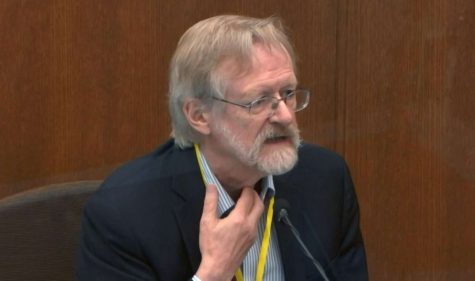
April 9th:
A world-renowned pulmonologist, who authored some of the medical fields top research on treating breathing disorders, testified that George Floyd cause of death was a lack of oxygen to his brain resulting from Chauvin’s jammed knee into the back of Floyd’s neck pressed into the asphalt in handcuffs. Dr. Martin Tobin, a physician in pulmonary and critical care medicine at Loyola University Medical Center and at the Hines Veteran Administration Hospital in Illinois, was called upon as an expert medical witness for the trial.
Tobin went as far as to supply a second-by-second timeline showing the exact moments Floyd lost consciousness, stopped breathing and suffered a traumatic, irreversible brain injury.
“Mr. Floyd died from a low level of oxygen. And this caused damage to his brain that we see, and it also caused a [Pulseless Electrical Activity] arrhythmia that caused his heart to stop,” Tobin explained.
Whether Derek Chauvin is found guilty of murder, all that we can hope is that George Floyd’s loved ones see in the prospect of a guilty verdict a greater peace within reach for themselves and a sense of justice for Floyd. But the plot is a lot larger than this. This trial will set a key precedent in the future of fairness in the justice system and police protocols. The constant violence of policing from the racial profiling on the street to the atrocities of what Derek Chauvin did to George Floyd at 38th and Chicago in Minneapolis, or what Kim Potter did to Daunte Wright a dozen or so miles away this past weekend will continue to exist.
A future Blue and White publication will explore the depths of the prosecution, their witness testimonies, and the final outcomes of this trial.


